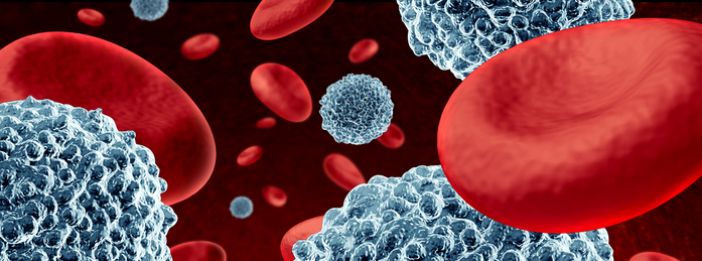Canadian Transplant study in MS posts promising results
Click here to view an interview with researcher Dr. Mark Freedman
A new Canadian study has reported the most promising results to date for hematopoietic stem cell transplantation (HSCT) in people with multiple sclerosis (Atkins and colleagues. Lancet 2016; epublished June 9, 2016). Following the procedure, about 70% of people had no MS activity – no relapses, inflammatory lesions on their MRI, or worsening of their disability.
HSCT is an experimental procedure in which blood-forming (or hematopoietic) cells are mobilized from the bone marrow, collected and frozen for future use. The bone marrow is where blood cells, including the white blood cells that make up the immune system, are produced. The person then receives chemotherapy drugs (called a “conditioning regimen”) to completely eliminate the bone marrow (called myeloablation). Once the old immune system has been destroyed, the stem cells are taken out of storage and administered intravenously to rebuild the person’s immune system.
Since MS is believed to be due to an abnormal immune response, the idea behind HSCT is to “delete all immunity files” and “reboot” the immune system. Before the stem cells are returned to the body, they are stripped of immune cells, which may be harbouring the old MS-like response.
In the Canadian study, 24 people with highly aggressive MS underwent HSCT. Subjects were younger (34 years of age on average), had been living with MS for 6-7 years, and had typically not responded to one or more MS therapies. One-half of the group had relapsing-remitting MS and one-half had secondary-progressive MS. Most had some degree of disability, including about one-third who required walking assistance (an EDSS score of 6). Following the procedure, people spent a median of 29 days in hospital, although some remained in hospital for as long as 5 months. The median follow-up time for the study was 6·7 years (ranging from 4 to 13 years).
Prior to transplantation, people were experiencing an average of about 1 relapse per year. After HSCT, no one experienced any relapses. Only one person had new lesions on their MRI, but these showed up in the first month and probably developed prior to transplantation. Overall, 17 of 24 people (70.8%) experienced no worsening of their disability over the next three years, including 20% who showed some improvement in their disability. For those who continued to worsen, the thinking is that this is due to a die-back of nerve fibres that were too damaged to be saved by treatment (Lee and colleagues. Mult Scler 2016; epublished May 31, 2016), although this theory requires further investigation.
There was one death during the study due to liver failure caused by the conditioning regimen. This regimen was later modified once a safer version of one of the drugs became available. Viral infections, such as shingles, warts and viral pneumonia, were common after transplantation despite the use of antiviral drugs. People were also required to take antibiotics and antifungal drugs to lower the risk of infections. About 1 in 5 developed thyroid problems, and one-third experienced a side effect of moderate severity.
These results suggest that carefully selected younger people with MS who are rapidly progressing may receive lasting benefits following transplantation. The decision to use myeloablation – complete replacement of the immune system – is controversial, with other transplant groups favouring partial ablation with a less aggressive conditioning regimen. However, the Canadian researchers have argued that complete destruction of the immune system is necessary to eliminate the dysfunctional immune response seen in MS. For example, a phase I/II trial of non-myeloablative HSCT found that 1 in 4 people experienced a relapse in the three years after transplant (Burt and colleagues. Lancet Neurol 2009;8:244-253). Another transplant study, called HALT-MS, which used a different drug regimen, recently reported that 91% of people had no worsening of their MS in the three years after transplant, although 1 in 7 people continued to have relapses (Nash and colleagues. JAMA Neurol 2015;72:159-169).
Myeloablative HSCT is not an approach intended for everyone. The people included in the Canadian study were young, fairly early in their disease course, but were rapidly getting worse because of the aggressive nature of their MS. The standard medications were unlikely to be effective in their situation, so use of a higher-risk treatment was more justified. Although their outlook was poor, many people were able to achieve a long-lasting remission and some showed a degree of improvement. However, HSCT cannot reverse existing neurological problems. And since it targets inflammatory rather than neurodegenerative processes, it is unlikely to provide much benefit in people with primary-progressive MS (Fassas and colleagues. J Clin Immunol 2000;20:24-30).
HSCT is an experimental procedure and not widely available. The Canadian researchers stated that HSCT is best done in an accredited centre with specialized units for bone marrow transplantation and MS. It’s also important to note that a standard transplant protocol hasn’t been developed, so different centres will use different procedures.
Stem cell transplantation
An interview with Dr. Mark Freedman
Running time: 9:39
Interview conducted April 2016, Vancouver BC
Share this article
Facebook Twitter pin it! Email
Related Posts
Back





